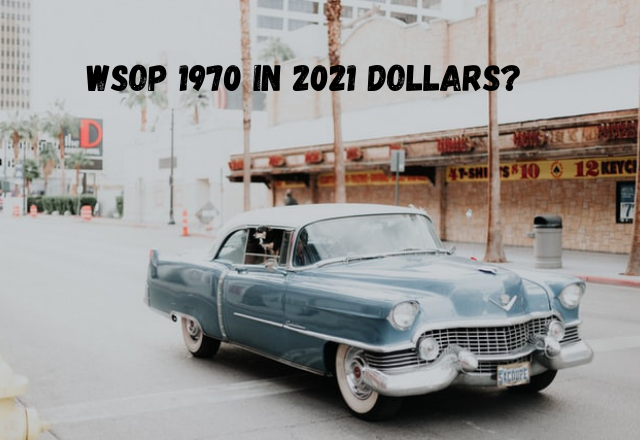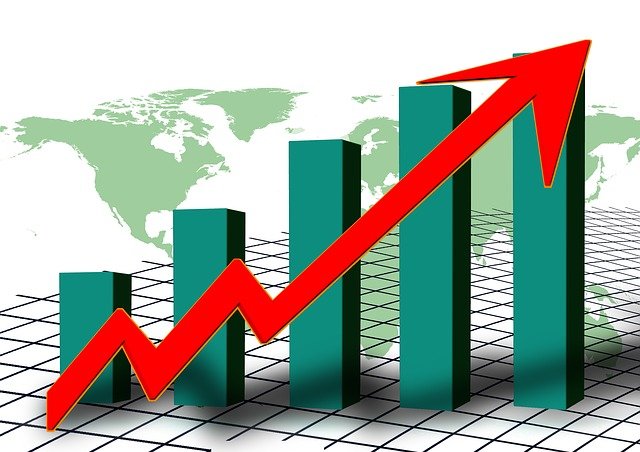The Value of Your Currency is Going Down – How Does this Relate to the WSOP and Online Poker?
Inflation is big news at the moment. While the politicians refer to this as ‘transitory’, you can be sure that prices will not go back down again any time soon.
Even small percentages in price increases quickly compound.
When you see the effect over 5 or more years, the numbers can be surprising. In real terms, the Sunday Million should now be called the ‘Sunday $710,000.’ Sure, the guarantee is a million dollars. Taking the purchasing power of that prize reveals something completely different!
Taking the World Series of Poker Main Event as an example shows how inflation eats at your spending power even more starkly. That $10,000 buy-in in 1970 has the same spending power as more than $70,000 today.
In this post I dive into how inflation and poker interact – in terms of buy-ins getting cheaper and prize pools getting smaller. Some personal thoughts on what inflation is and is not can be found at the bottom of this post.
I’m using USD and US inflation rates to keep things from getting too complex. I have rounded up numbers too. The same logic applies for Euros, CAD, GBP, AUD, and many other currencies.
.png)
Poker and Inflation: The Sunday Million is Getting Cheaper
The first Sunday Million at PokerStars took place on the 6th of March 2006. That year, the inflation rate was 3.23%.
Every year since then (with the notable exception of a post financial crisis 2009), prices have gone up. Put another way, the amount of goods and services your currency can buy has decreased.
The 5.25% inflation so far in 2021 is the highest level since 1990.
Averaged out, the buying power of your dollars has gone down by 36%. You will need 30% more dollars to buy in to the Sunday Million in 2021 than you would in 2006.
2006 Buy-In in Real Terms = $215
2021 Buy-In in Real Terms = $292
Of course, the buy-in has stayed at $215. A positive way of looking at this is that you can spend around 40% less (in terms of the goods and services your dollars could buy) to enter that same tournament 15 years after it started.
That Million Dollar Prize Pool? No Longer a Real Million
So, the buy-in is cheaper than ever in real terms. How about the guaranteed prize pool?
If you have heard the expression ‘a million is not what it used to be’ then it will come as no surprise that the prize is smaller. What might surprise you is how far it has fallen.
A dollar gets you just 71% of the goods and services that the same dollar would have bought when the Sunday Million started in 2006.
This means that the Sunday Million has an equivalent prize pool of $710,000.
It just does not have the same ring to it for me!
Again, we can look at this backwards. For the prize pool to keep up with the devaluation of currency, we need to add the 36% to maintain purchasing power parity.
Here is what it would look like:
Big Sunday Event: Buy-in $292 with a Guaranteed $1,360,000.

How About the World Series of Poker and Inflation?
I mentioned in the introduction that the $10k buy-in for the original Main Event in 1970 would be ‘worth’ $70,000 today. That is to say those 1970 dollars would buy seven times more goods and services compared to the same number of 2021 dollars.
Looking at it the other way, if the buy-in to the WSOP Main Even was inflation linked, you would be spending $70,000 to play in the Main Event in 2021.
Of course, the prize pool has grown, due to more players entering each year (especially marked as we moved into the new millennium). However, when you take a benchmark amount such as a million dollars, the value of your money slowly deflates over time.
A million bucks in 2021 gets you only 15% of the goods and services that the same million would have bought in 1970. It is the ‘equivalent’ of $142,857.
Poker Buy-Ins 5% Inflation Continues?
We got to almost 7x since 1970 without the current surge. It follows that a couple more years of 5%+ on top will add another boost. This means that to match the ‘cost’ of that original 1970 WSOP Main Event, the buy-in would need to be $80,000+.
Back to the online poker example since 2006. It means that our ‘Sunday $710k’ would become the equivalent of a ‘Sunday $640k’. Should inflation continue at that level, the purchasing power of the prize pool would be half of the original by the middle of the 2020’s.
That is a sobering thought. No so much for poker, but to show just how quickly currency loses its value.
Poker and Inflation: Applying the Same Logic to Other Games
Whatever poker game you enjoy, the same logic applies.
The value of your currency is decreasing every year. Using the rough estimates of add 36% to your buy-in, or 40% to the prize pool to maintain parity works for everything.
Here are some examples:
- NL $100 in 2021 is the equivalent of NL $140 in 2006
- A $1000 tournament score is worth $710 in 2021 in 2006 dollars
- A $10 Sit and Go in 2006 would cost $14 in 2021 dollars to enter.
Quick Note: I do not recommend the Sunday Million.

Currency Fluctuations and Poker Entry Fees
I used round numbers in USD to keep things simple above. Even if you disagree with the exact numbers, the direction of the effects are clear.
When you add in the relative strength of currencies, the real price of online poker changes year by year.
The Euro is a great example. Right now, the level is similar to what is was against the dollar in 2006. If you look at the yearly graph, there are big changes. The peak was around 1.5 EUR to the Dollar, the bottom was almost 1:1. The British Pound was high compared to the dollar in 2006 and 2007. In constant currency, the USD buy-ins have been getting more and more expensive ever since.
End Thoughts: What Inflation Is and Is Not
Inflation is accepted as necessary and normal around the world. The slow devaluation of fiat currency reduces the massive government debts. Not by enough to make a realistic difference, though that is another topic entirely.
Assets including real estate, land, commodities and even shares to an extent appear to be constantly rising. When you look at them through the prism of the currency devaluing, much of this growth is an illusion.
What is does mean is that the owners of assets do not suffer from the effects of currency devaluations as much as those working for constant (or slowly increasing) wages.
Far from being a positive, inflation is a tax on the assetless… it moves wealth slowly and surely, year by year, to the people that own the most assets.
Of course, without inflation the international government debt Ponzi scheme would collapse. Nobody would benefit from that.
It does raise multiple questions for me… but those are for another day.
GL at the tables,
Mark
Props to https://www.in2013dollars.com/ for the stats!
Submitted by Planet Mark on Wed, 10/06/2021 - 15:06


